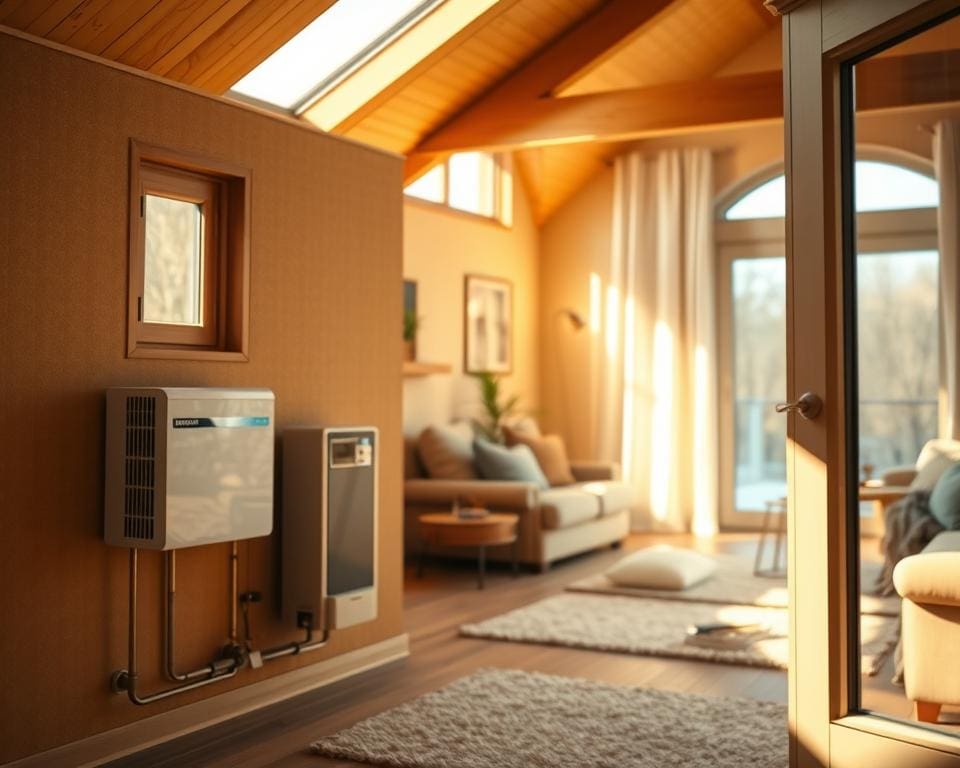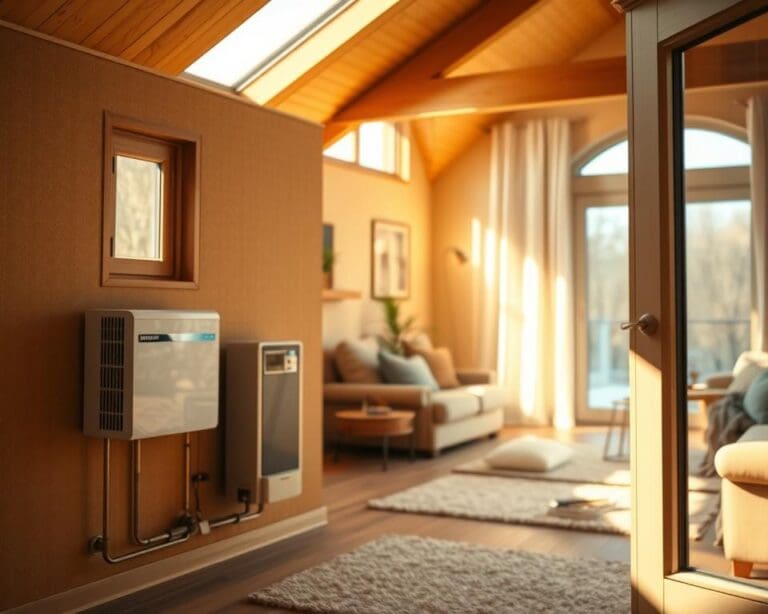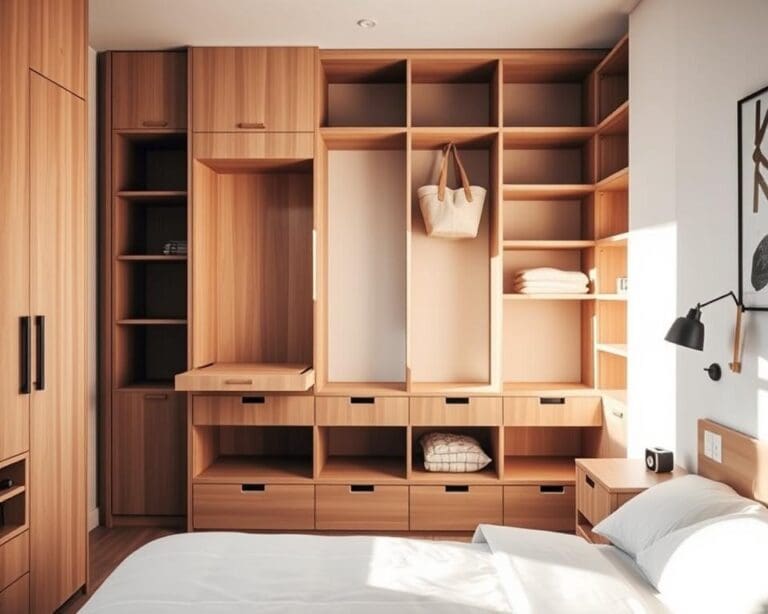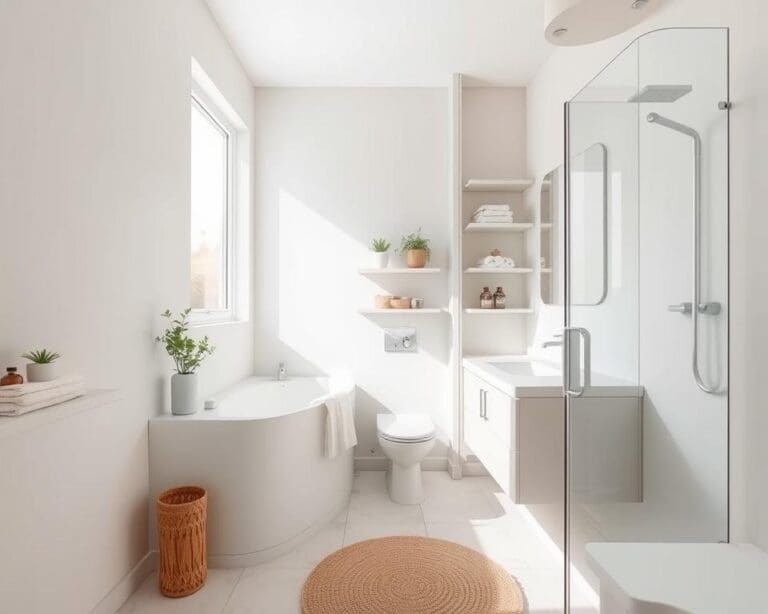As winter descends upon us, the quest for home warmth becomes a top priority for many households. Ensuring your home is both warm and energy-efficient is not merely a comfort; it’s a significant step towards sustainability and cost savings. By embracing energy-saving tips and exploring innovative winter heating solutions, you can create a sanctuary that not only shields you from the cold but also optimises energy efficiency. Let’s delve into effective strategies that will help you maintain a cozy atmosphere while being kind to your wallet and the planet.
Understanding Home Insulation for Maximum Efficiency
Securing optimal thermal efficiency in your home relies considerably on the choice of insulation materials. These materials not only facilitate energy loss prevention but also enhance comfort throughout your living space. Understanding the types of insulation available is crucial in making informed decisions that align with your home’s needs.
Types of Insulation Materials
Among the various insulation materials, the following are commonly employed:
- Fibreglass: Lightweight and cost-effective, fibreglass offers excellent thermal resistance.
- Foam Board: Known for its high insulating properties, foam board is suited for exterior walls and roofs.
- Cellulose: Made from recycled paper, cellulose is eco-friendly and provides substantial thermal efficiency.
- Spray Foam: Offering superior air sealing abilities, spray foam enhances energy efficiency by eliminating gaps.
Benefits of Proper Insulation
Implementing effective home insulation has a multitude of advantages. It significantly reduces energy bills by maintaining more consistent indoor temperatures. This stability directly translates to lower heating demands, which contributes to the overall energy loss prevention. Furthermore, a well-insulated home emits fewer greenhouse gases, making it a more environmentally friendly space.
How do you keep your home warm and efficient?
Maintaining a warm and efficient home begins with a thorough understanding of your current heating systems. A detailed home heating assessment can illuminate areas for improvement, ultimately leading to enhanced comfort and energy savings. Consider various heating sources, their effectiveness, and suitability for your particular living space.
Assessing Your Current Heating System
Evaluating your heating systems is essential for optimal performance. Begin by examining different options such as central heating, electric radiators, and underfloor heating. Important criteria for assessment include:
- Age of the system, which impacts efficiency.
- Efficiency ratings indicating how well they perform.
- Suitability to your home size, ensuring adequate warmth.
Understanding these factors will help you make informed decisions regarding potential upgrades or replacements, setting the stage for significant energy savings.
Smart Thermostats: A Modern Solution
Incorporating smart thermostats into your heating management can transform how you control your home’s warmth. Options such as Nest and Hive offer remarkable features, including remote control capabilities and scheduling features. These devices empower homeowners to:
- Monitor and manage energy usage, leading to improved efficiency.
- Adjust settings based on personal habits, naturally optimising heating needs.
- Gather insights into energy consumption, enhancing future energy savings.
Employing smart thermostats not only simplifies temperature control but also contributes to a more sustainable and economically sound home heating solution.
Choosing Energy-Efficient Heating Solutions
Finding the right heating system is vital for any household aiming for energy-efficient heating. Various heating system types come with their own unique advantages and disadvantages. Understanding these can guide homeowners towards making better decisions that contribute to sustainable and green living.
Types of Heating Systems: Pros and Cons
Homeowners often consider gas boilers, electric heaters, and heat pumps when deciding on an energy-efficient heating solution. Each option presents a range of efficiencies, costs, and installation complexities.
- Gas boilers: Generally provide high efficiency and lower operational costs. Installation is fairly straightforward, but these systems may contribute to carbon emissions.
- Electric heaters: Offer quick heating and ease of installation. They can be less cost-effective in the long run due to higher energy prices.
- Heat pumps: These are regarded as one of the most efficient heating system types. They utilise renewable energy from the air or ground, significantly reducing fossil fuel dependence.
Using Renewable Energy Sources
Incorporating renewable energy into your heating strategy can enhance the benefits of energy-efficient heating. Solar panels and biomass heating systems play crucial roles in reducing energy bills while promoting sustainable practices.
- Solar panels: These systems harness sunlight, converting it into energy to power heating systems. This reduces reliance on conventional energy sources.
- Biomass heating: A sustainable alternative that uses organic materials as a fuel source. It emits significantly fewer greenhouse gases, making it an attractive option for environmentally conscious homeowners.
Regular Maintenance for Optimal Performance
Ensuring your home’s heating system operates efficiently requires regular maintenance. This includes everything from boiler servicing to sealing leaks. Implementing these practices can significantly enhance energy efficiency and reduce long-term costs.
Importance of Servicing Your Boiler
Annual boiler servicing is crucial for safety, efficiency, and longevity. A neglected boiler may lead to issues such as carbon monoxide leaks, reduced heating performance, or even complete system failure. Professional inspections not only identify potential hazards but also ensure that your system runs at peak performance. This proactive approach can ultimately save you money by avoiding costly repairs and extending the life of your equipment.
Sealing Leaks and Drafts
Air leaks and drafts can undermine even the most well-maintained heating systems. Common areas to check include windows, doors, and attics. Sealing these gaps through methods like caulking and weather stripping contributes to overall heating efficiency. Proper draft sealing is one of the most effective energy efficiency tips, helping maintain a comfortable home environment while reducing energy bills.
Creating a Cozy Atmosphere
Transforming your home into a sanctuary of warmth and comfort involves more than just heating solutions. The right selection of soft furnishings can significantly enhance your space, contributing to both aesthetic appeal and functional heat retention. Incorporating textures, patterns, and colours creates a welcoming environment that elevates overall home comfort.
Soft Furnishings and Their Impact on Warmth
Textiles play a crucial role in maintaining a cozy atmosphere. Items like curtains, cushions, and rugs are not just decorative—they are essential for enhancing heat retention in your living areas. Thick curtains can act as insulators, preventing drafts and keeping warm air inside. Meanwhile, plush cushions and textured rugs provide comfort underfoot while adding layers of warmth.
Layering Your Space for Heat Retention
Layering different materials within a room maximises heat retention, creating an inviting atmosphere. Consider using a combination of throws over sofas and beds to encapsulate body heat. Multiple layers of curtains can also trap warmth effectively. Such strategies not only embrace home comfort but foster a chic look, melding functionality with style.
Smart Utilisation of Natural Heat Sources
Incorporating natural heat into your home heating strategy can significantly enhance energy efficiency. Embracing sunlight as a primary heat source provides both comfort and sustainability. Clever design choices and strategic landscaping can harness this potential effectively.
Maximising Sunlight During Winter Months
To take advantage of winter sunlight, focus on several key techniques:
- Strategic Window Placement: Position windows to face south to capture the maximum solar gain, allowing natural heat to penetrate your living spaces.
- Window Treatments: Choose thermal curtains that can retain warmth at night while allowing sunlight to stream in during the day.
- Thermal Mass: Incorporate materials such as stone or concrete that absorb and retain heat from winter sunlight, releasing it during cooler periods.
The Role of Landscaping in Warmth
Landscaping for warmth involves thoughtful planting and design strategies to improve heat retention:
- Deciduous Trees: Plant these on the south side of your home to provide shade in the summer while allowing the sun to warm your space in winter.
- Evergreens: Position these as windbreaks to reduce chilling winds during the colder months, creating a more inviting atmosphere.
- Extensive Gardens: Designing gardens that absorb sunlight can raise the temperature in adjacent areas of your home.
Investing in Long-Term Solutions
To ensure a warm and efficient home, it is crucial to make an energy efficiency investment that extends beyond immediate fixes. Retrofitting insulation can significantly enhance the thermal performance of your home, leading to reduced energy consumption and lower heating bills over time. Upgrading to energy-efficient appliances not only contributes to sustainable living but also aligns with modern standards that promote better environmental responsibility.
Moreover, exploring government grants or incentives for eco-friendly improvements is an excellent strategy. These initiatives can help offset the costs associated with long-term home improvements, making it more feasible for homeowners to adopt energy-saving technologies and practices. Such investments are not merely expenses; they are vital steps toward creating a resilient and future-ready home.
The financial and ecological benefits of investing in energy-efficient home heating solutions are substantial. As energy prices continue to fluctuate, securing your home with these improvements will reduce your dependency on heating fuel, allowing for greater savings in the long run. Remember, every step you take towards enhancing energy efficiency matters, creating a more sustainable, comfortable, and cost-effective living environment.









